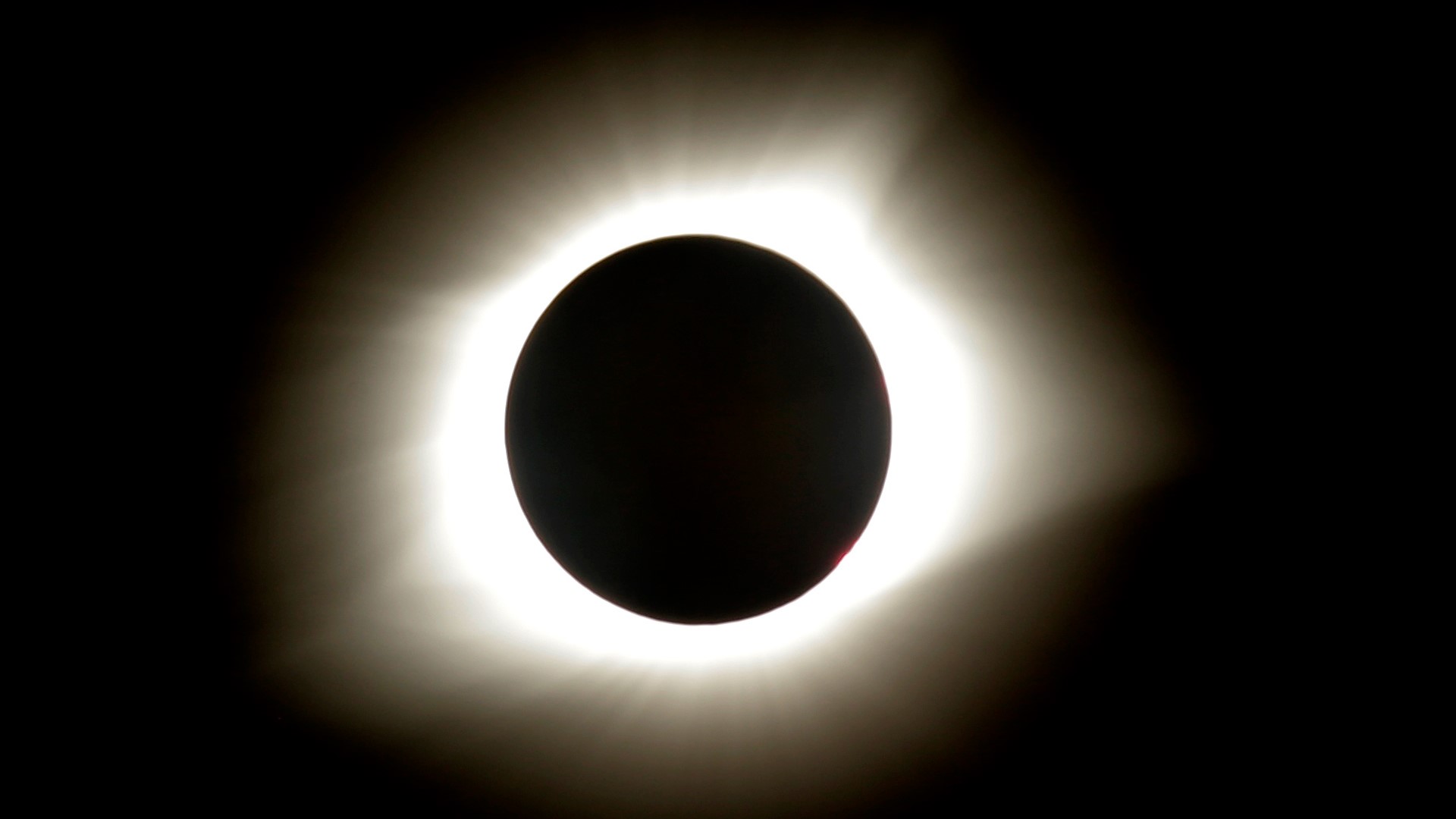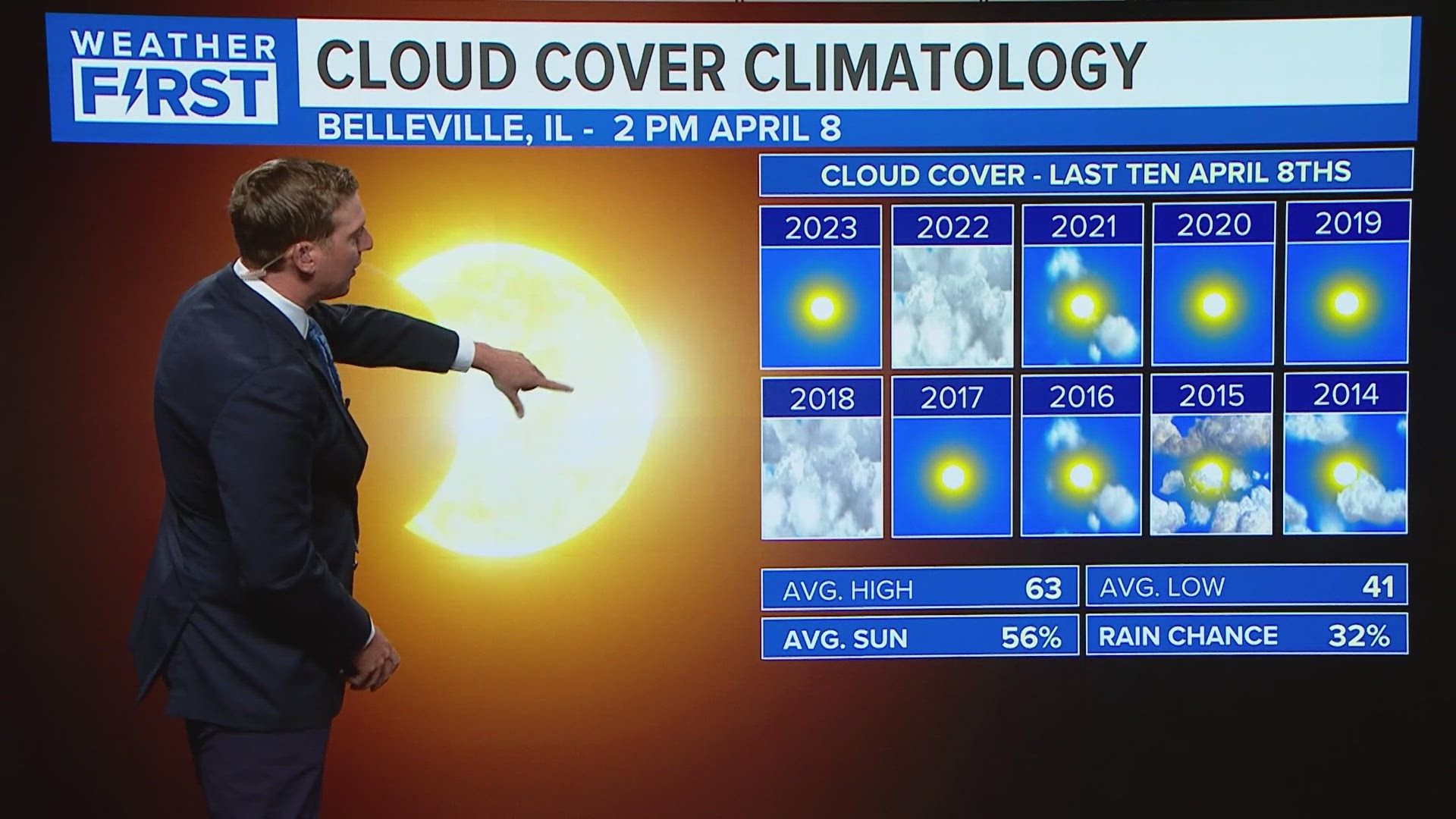ST. LOUIS — It has been seven years since we last experienced the full totality of the sun in the St. Louis area. After the last total solar eclipse, many of us have already begun the countdown to the next one. That date is fast approaching, as we circle our calendars for Monday, April 8.
RELATED: Here are some of the best spots in the Bi-state to see totality during the 2024 solar eclipse
Let's review the last major eclipse.
To watch 5 On Your Side broadcasts or reports 24/7, 5 On Your Side is always streaming on 5+. Download for free on Roku, Amazon Fire TV or the Apple TV app store.

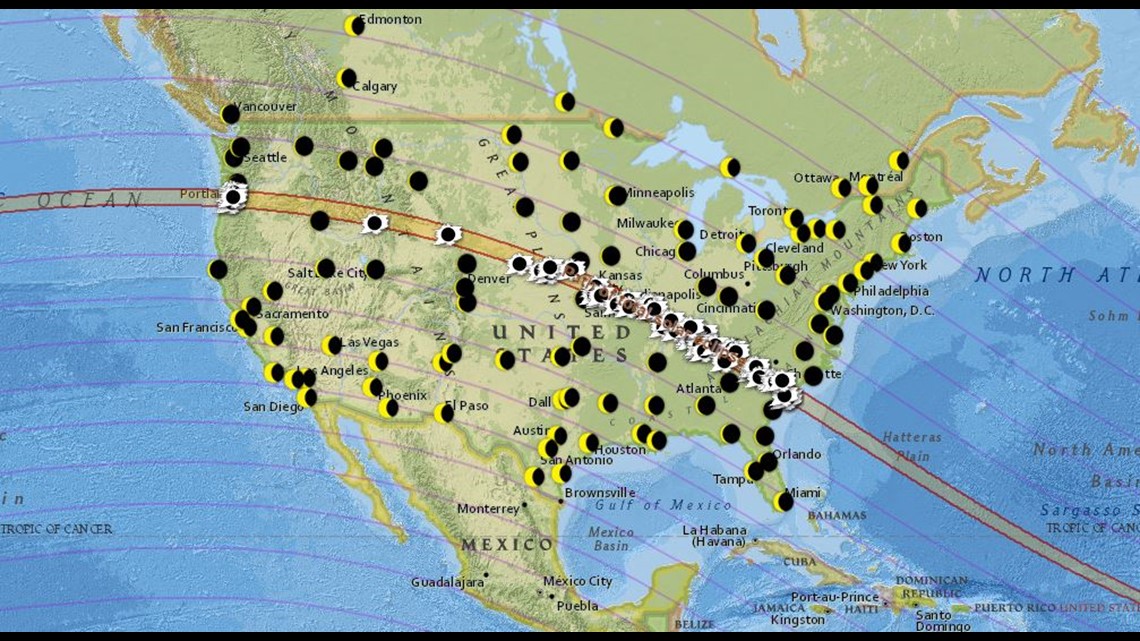
The eclipse from 2017 started in Oregon and finished in the Carolinas. Kansas City and St. Louis were both in the path of full totality during this timeframe.
The April 8 eclipse includes Missouri and downstate Illinois.

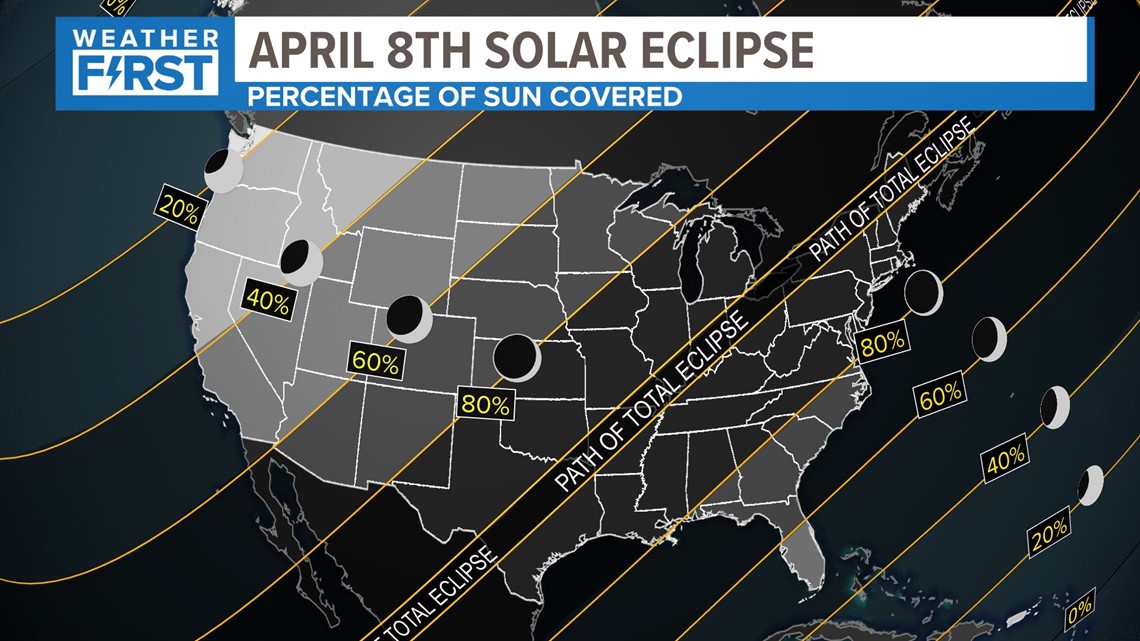
The path of the the 2024 eclipse stretches from southwest Texas, all the way to Maine. This path doesn't include the City of St. Louis, but full totality and daytime darkness are very close by.


It won't take you very long to get into the path of totality, though. Several cities in our viewing area will have 2-4 minutes of daytime darkness!
Totality across the United States will last about an hour and a half. As you see from the above video, there are several areas in downstate Illinois involved in the totality. Carlyle will have one minute and 11 seconds of totality. Mt. Vernon will have nearly four minutes.


Farmington is another great spot for totality with two minutes and 13 seconds.


Looking at the maps above, you can see the fine line between totality (complete daytime darkness,) and somewhere between 97and 99% coverage.
If you're not in the path of totality, you'll absolutely need eclipse glasses. (You really should get them if you're in the path of totality, as well.) This will allow you to experience the eclipse from start to finish, and see the progression as the eclipse begins and ends. You'll also notice that the further inside of the path of totality you are, the longer the duration of the total eclipse will be.



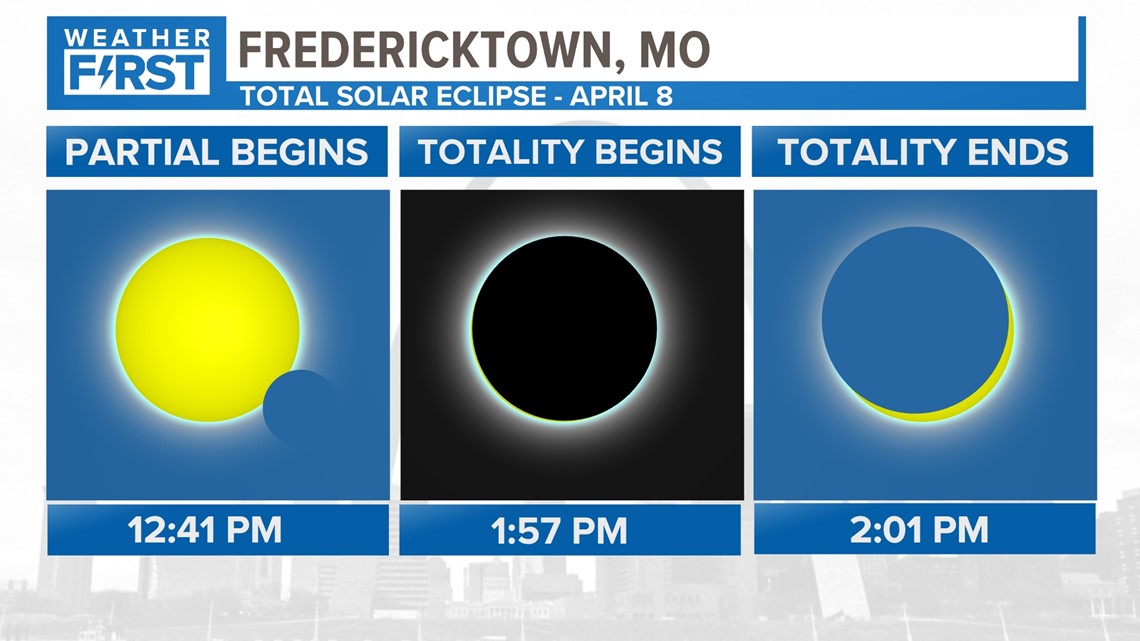

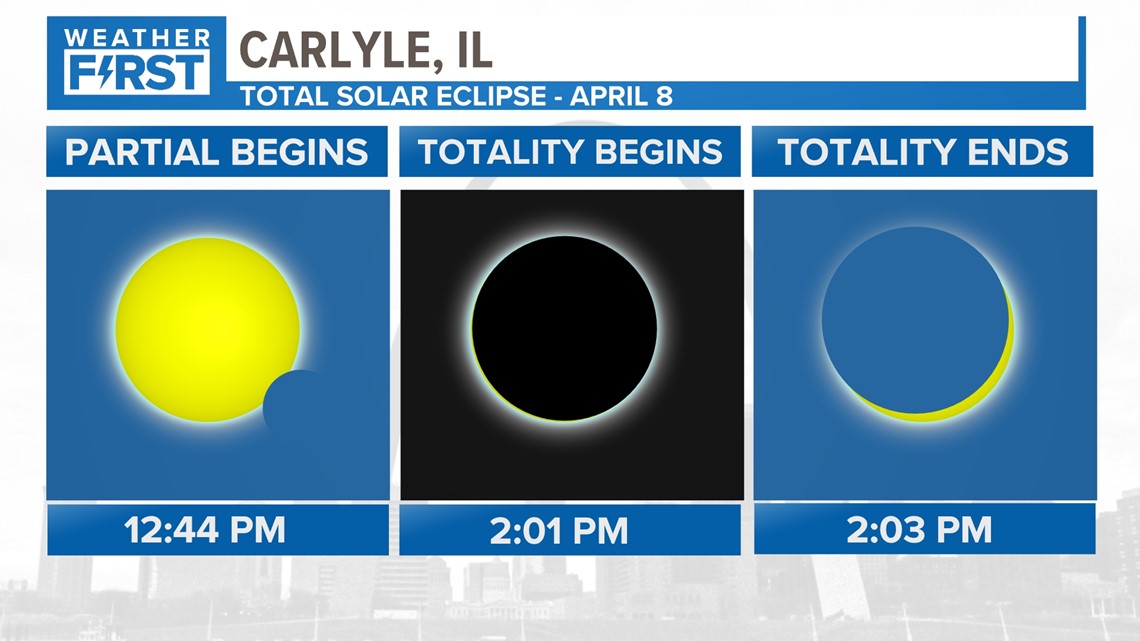



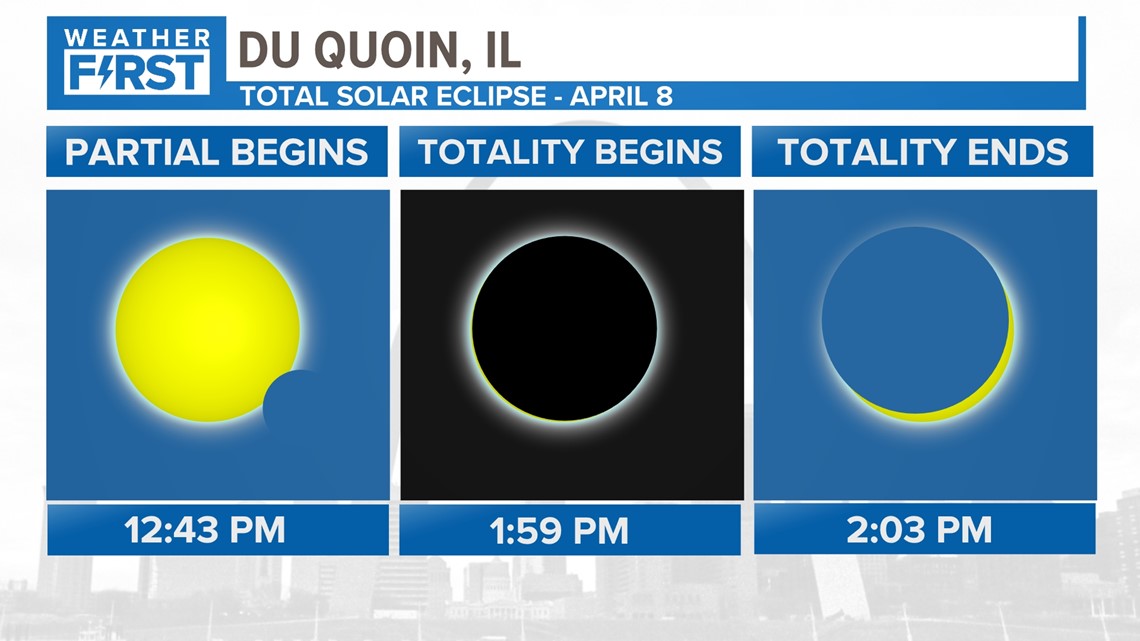

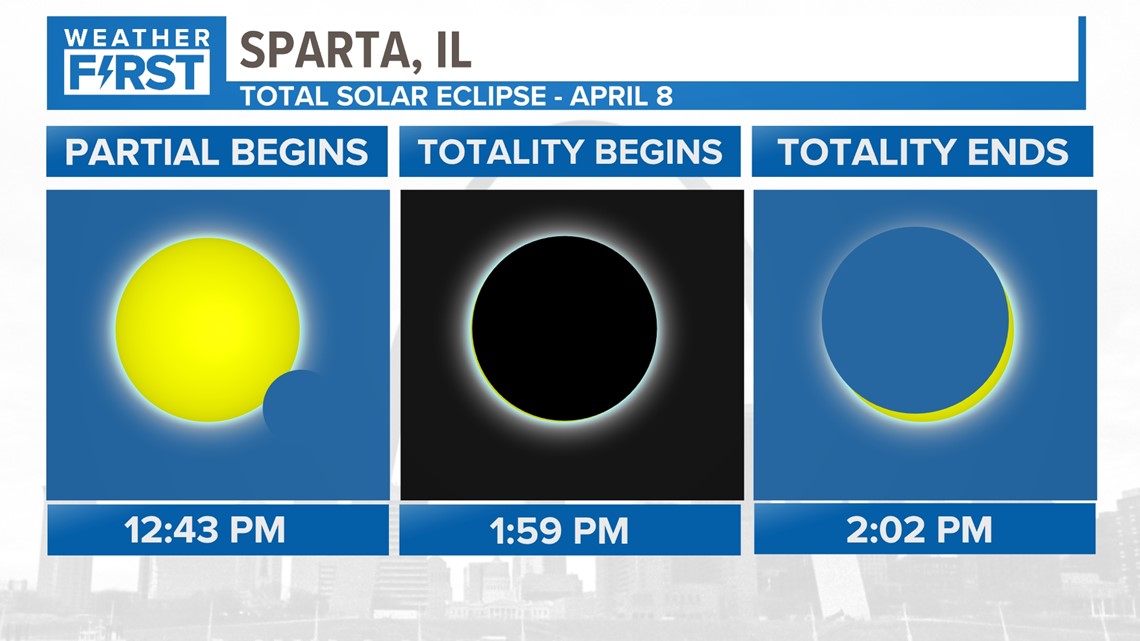



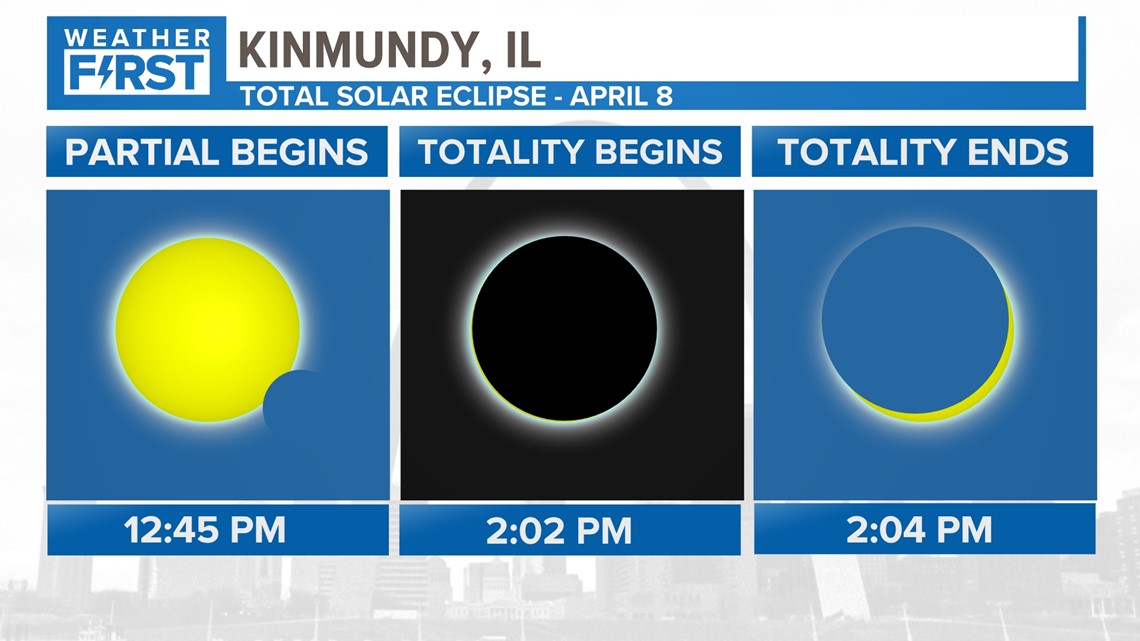

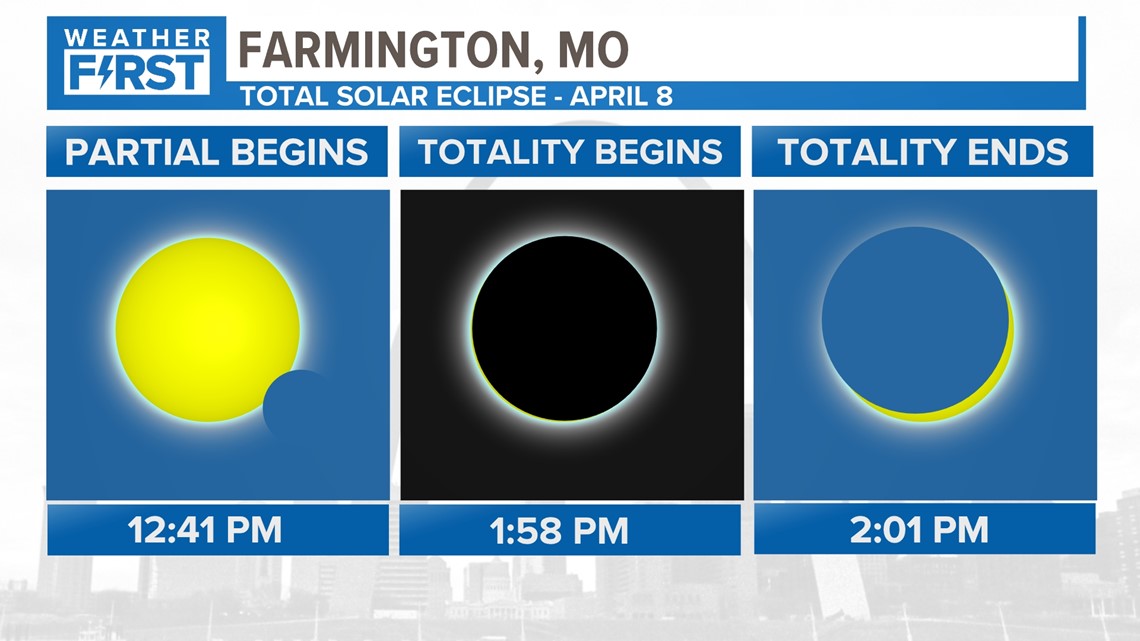

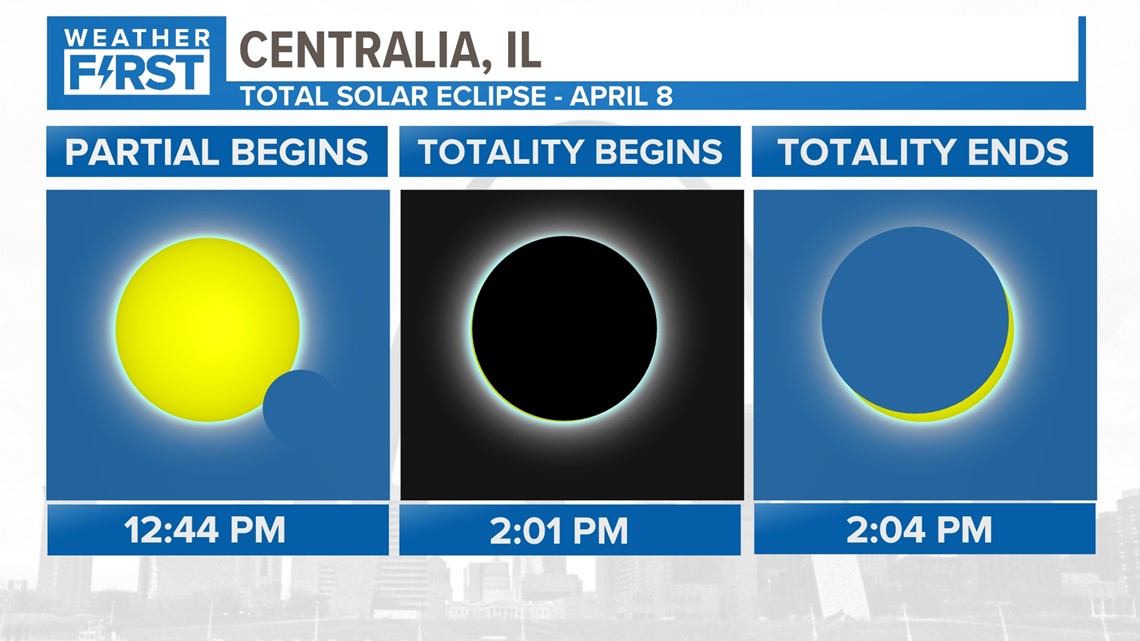

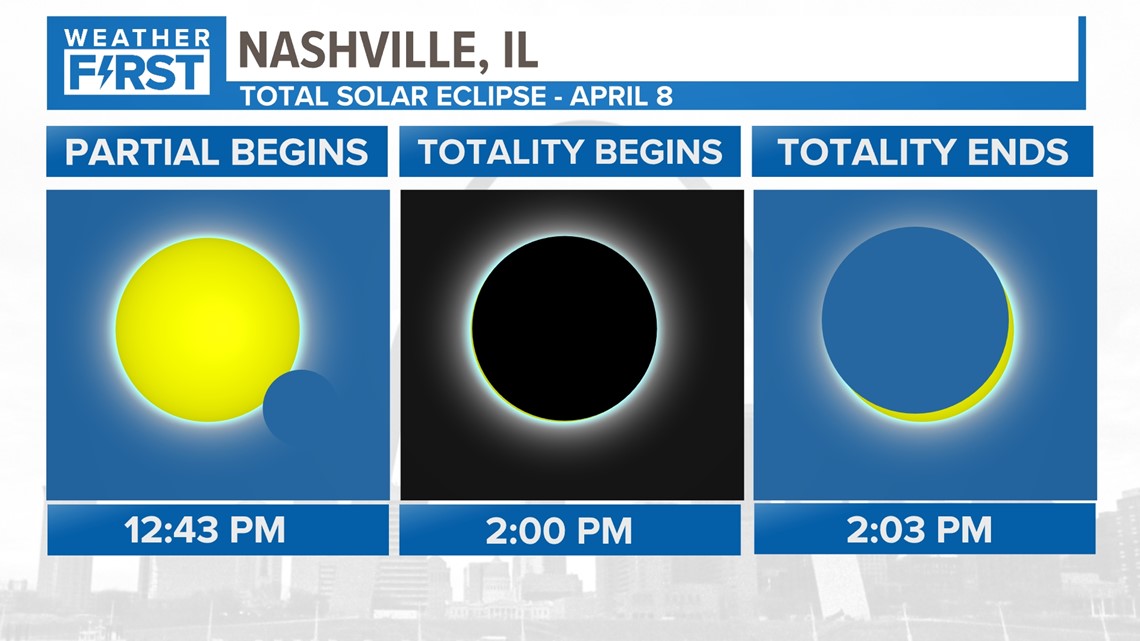

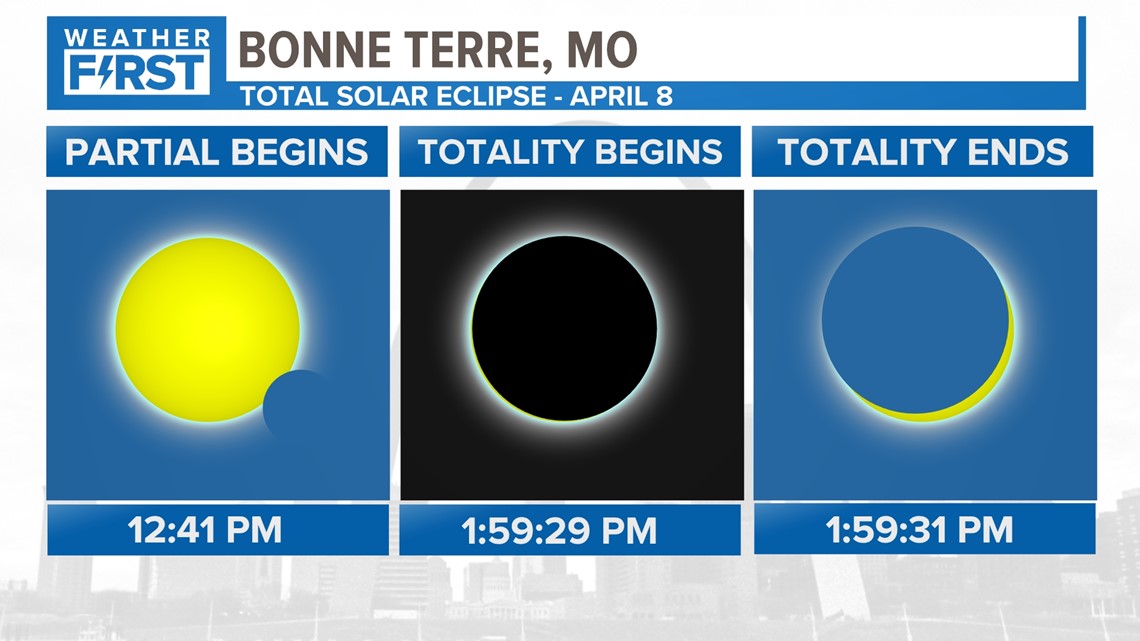
As you can see from some of the cities I sampled above that are in the path of totality, the beginning of the eclipse is somewhere around 12:40 p.m. locally. This is when you'll need the eclipse glasses, as the moon appears to "take a bite" out of the sun through the course of the next hour. Once it reaches totality, complete darkness will fall over some of these select locations at slightly different times. Depending on where you are located in the path, the time of totality will vary.
Bonne Terre is a very good example of a place where totality won't last long at all! This will be crucial if you're looking to see darkness, as the southeast side of most places will favor the longer duration of totality.
Weather on April 8


But none of this will matter if clouds are in the way and we don't get to enjoy this historic event! April 8 seems to be a tricky date for us weather-wise, historically. Obviously, spring around here can change pretty quickly, as we battle those conflicting air masses.
Historically, it has snowed 17 times and rained 72 times. Going back the last 4 years, it would have only been visible twice.

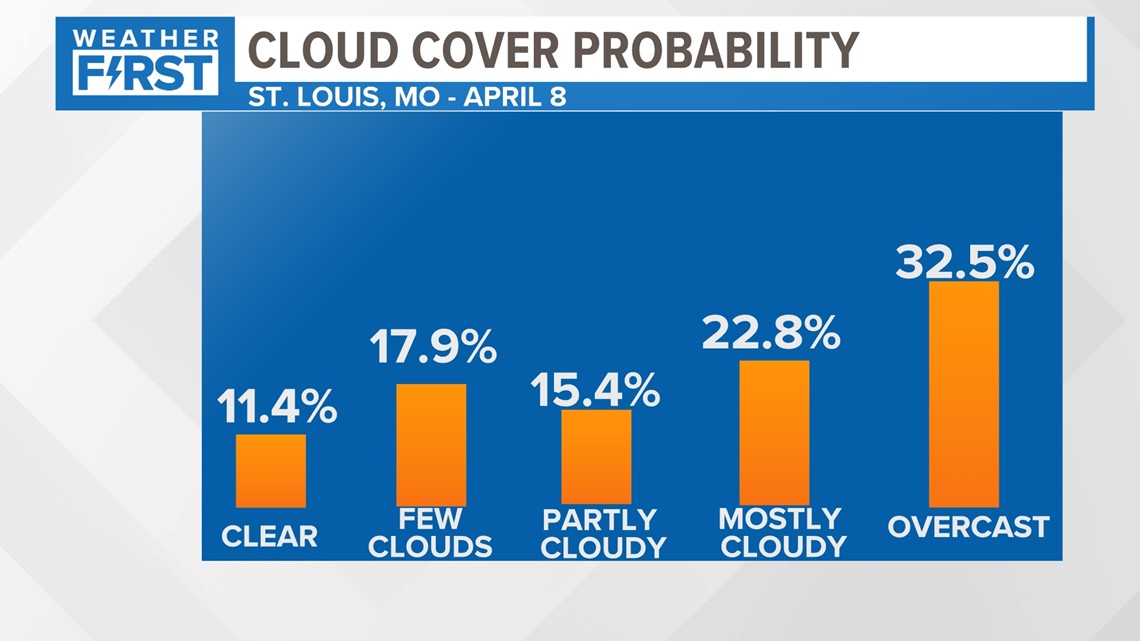

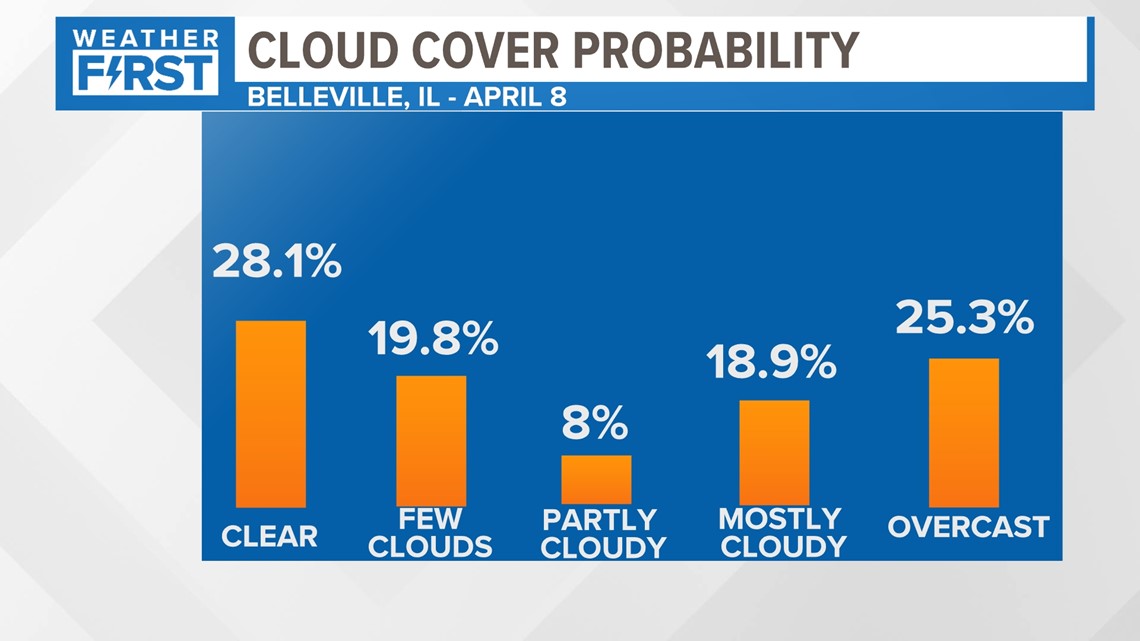
While St. Louis and Belleville are not in totality, their data is reliable and can provide some historical information in regard to our probability of viewing the eclipse in April. Using the last 4 years and matching it to historical data, it seems it is a 50/50 shot to be clear enough to view the eclipse. Of course, it will be something we monitor the days before April 8, but we will monitor the patterns and keep you up to date on the probability of being able to see this.

